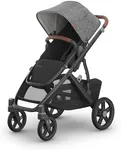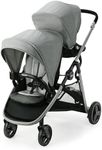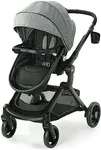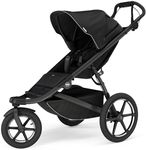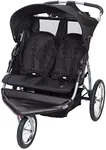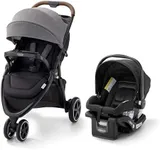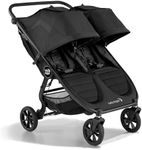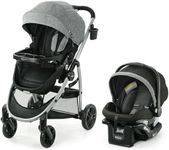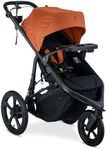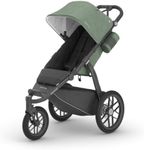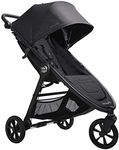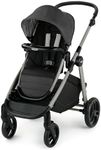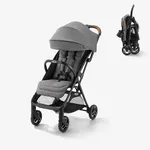Buying Guide for the Best Off Road Stroller
Choosing the right off-road stroller can make a significant difference in your outdoor adventures with your little one. Off-road strollers are designed to handle rough terrains, providing a smooth and comfortable ride for your child while ensuring ease of use for you. When selecting an off-road stroller, it's essential to consider various specifications to ensure it meets your needs and preferences. Here are some key specs to look out for and how to navigate them.Wheel Type and SizeThe wheels are one of the most critical components of an off-road stroller. Larger wheels, typically 12 inches or more, are better suited for rough terrains as they can easily roll over obstacles like rocks and roots. Air-filled tires provide better shock absorption and a smoother ride, but they may require occasional maintenance, such as inflating or patching. Foam-filled tires are maintenance-free but may not offer the same level of comfort. If you plan to use the stroller on very rugged paths, opt for larger, air-filled tires. For less demanding terrains, foam-filled tires might suffice.
Suspension SystemA good suspension system is crucial for off-road strollers as it helps absorb shocks from uneven surfaces, ensuring a smoother ride for your child. Look for strollers with adjustable suspension systems, which allow you to customize the level of shock absorption based on the terrain. If you frequently navigate very bumpy or rocky paths, a stroller with a high-quality suspension system is essential. For less rugged terrains, a basic suspension system may be adequate.
Frame MaterialThe frame material affects the stroller's durability and weight. Aluminum frames are lightweight yet sturdy, making them a popular choice for off-road strollers. Steel frames are more durable but can be heavier, which might be a consideration if you need to carry the stroller frequently. If you prioritize ease of handling and portability, an aluminum frame is ideal. For maximum durability, especially on very rough terrains, a steel frame might be more suitable.
ManeuverabilityManeuverability is essential for navigating tight spaces and making sharp turns on rough terrains. Look for strollers with a swivel front wheel that can be locked for stability on uneven surfaces. Three-wheeled strollers generally offer better maneuverability compared to four-wheeled ones. If you often navigate narrow trails or crowded areas, a stroller with excellent maneuverability is crucial. For more open and straightforward paths, maneuverability might be less of a concern.
Weight and FoldabilityThe weight and foldability of the stroller affect its portability and ease of storage. Lighter strollers are easier to carry and transport, while those that fold compactly can be stored conveniently in your car or home. If you frequently travel or need to carry the stroller up and down stairs, a lightweight and easily foldable model is ideal. For those who primarily use the stroller in one location, weight and foldability might be less critical.
Safety FeaturesSafety features such as a five-point harness, a reliable braking system, and a sturdy frame are essential to ensure your child's safety during off-road adventures. A five-point harness keeps your child securely in place, while a good braking system prevents the stroller from rolling away on inclines. Always prioritize strollers with comprehensive safety features, especially if you plan to use them on challenging terrains.
Storage and AccessoriesAdequate storage space for essentials like diapers, snacks, and water bottles can make your outings more convenient. Look for strollers with ample storage baskets and additional pockets. Accessories such as sun canopies, rain covers, and cup holders can also enhance your experience. If you often go on long outings, prioritize strollers with generous storage and useful accessories. For shorter trips, minimal storage might be sufficient.
